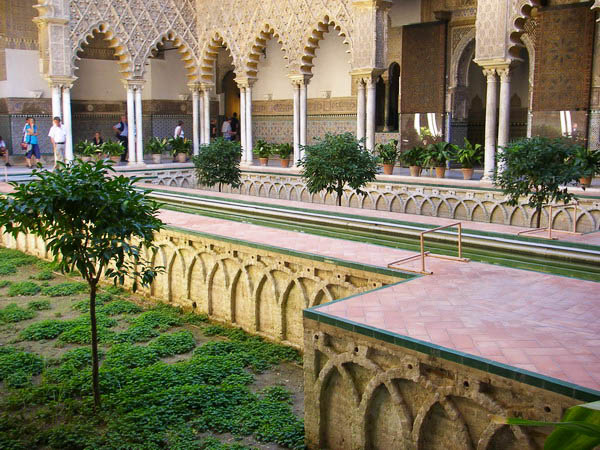The Technical Secretariat of Med-O-Med held a meeting on 21 October with Manuel Casares and José Tito, of Granada University, and Alberto Juan y Seva from Seville University, who belong to the Med-O-Med Committee of Experts. The venue for the meeting was the Andalusian Institute for the Historical Heritage of Seville.
 The aim of the meeting was to lay the foundations and set the targets for the Inventory of Historical Gardens in the Med-O-Med region, which is to be drawn up as part of the Med-O-Med Programme. This inventory will be an important tool for ensuring that these cultural landscapes are properly appreciated as cultural landscapes as a result of activities in the fields of maintenance, conservation, restoration and utilisation. In the future the aim is that they should receive the recognition and legal protection they deserve.
The aim of the meeting was to lay the foundations and set the targets for the Inventory of Historical Gardens in the Med-O-Med region, which is to be drawn up as part of the Med-O-Med Programme. This inventory will be an important tool for ensuring that these cultural landscapes are properly appreciated as cultural landscapes as a result of activities in the fields of maintenance, conservation, restoration and utilisation. In the future the aim is that they should receive the recognition and legal protection they deserve.
The inventory and the subsequent programme of action are necessary because most of the Islamic gardens are in a state of relative neglect, or have been subject to inappropriate alterations. The current socio-economic situation of the Muslim-majority countries prevents them from focusing on the recovery of their heritage. There are practically no legal figures for protection, and only in very few cases do countries turn to organisations such as UNESCO for assistance.
Most of the Islamic gardens are in a state of relative neglect, or have been subject to inappropriate alterations.
Gardens comprise two elements that are of value for Med-O-Med – their plants and their architecture. Gardens are therefore a tribute, designed intentionally by human beings, to the cultural landscape concept This is why UNESCO recognises them as one of the three relevant categories in the definition of cultural landscapes.
Once again, through this new activity, the Med-O-Med Programme should be able to encourage greater awareness amongst society about the need to protect the region’s natural and cultural heritage.
Gardens have always been a source of inspiration in Islamic culture, as is apparent amongst the poets of Al-Andalus, who created a genre known as Rawdiyyat (from rawd, meaning ‘gardens’).
This post is available in: English Español

